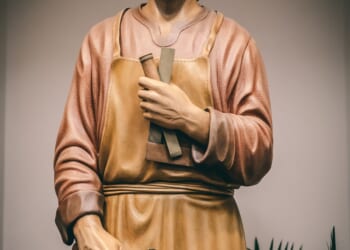ANZAC Day commemorates the Australian and New Zealand Army Corps’ landings on the beaches of Gallipoli in 1915.
April 25 is ANZAC Day, which commemorates the anniversary of the Australian and New Zealand Army Corps’ (ANZAC) landings on the beaches of Gallipoli in the Dardanelles, Turkey, in 1915, in one of the key battles of World War I outside of the Western Front. In the process, the ANZACs met fierce resistance from the Ottoman Turk defenders (as dramatized in the 1981 Peter Weir film Gallipoli starring a young Mel Gibson), with horrific casualties suffered by both sides. In spite of those horrific casualties, the ANZACs fought with great tenacity and commitment, and thus it came to pass that the Gallipoli Campaign represented a watershed of the two then-young nations of Australia and New Zealand.
This year’s ANZAC Day marked the 110th anniversary of the kickoff of the campaign, and I had the honor of covering the commemorative events in Washington DC for The National Interest.
Dawn Service and Gunfire Breakfast
Washington, DC’s ANZAC Day commemorative officially kicked off at 5:30 that morning with the Dawn Service at the National World War I Memorial. U.S. Air Force chaplain Major Lucas Dalgleish gave the invocation, followed by official remarks from Rosemary Banks, New Zealand’s ambassador to the United States, and Kevin Rudd, Australia’s ambassador to the United States (and former Aussie prime minister).
In addition to paying tribute to the ANZAC troops, Rudd talked about his own father’s World War II service, and included mention of a WWII event that was to Australia what the Bataan Death March was to America’s WWII troops: the Sandakan Death March in Borneo in 1945, which resulted in the death of over 2,400 Allied prisoners of wars; there were only six survivors—all Australians—who only survived because they managed to escape into the jungle.
For her part, in addition to honoring the ANZAC soldiers, Banks also mentioned the New Zealand government’s recent approval of a plan that will double that country’s defense spending over the next eight years. It is expected to boost New Zealand’s value as a military asset to Australia and the United States alike.
As a tribute to the spirit of reconciliation and mutual respect that transpired between Turkey, Australia, and New Zealand after WWI ended, Lieutenant Cihan Tunc of the Embassy of Turkey’s defense staff did a reading of Mustafa Kemal Ataturk’s deeply moving Tribute to ANZAC soldiers.
The dawn service ended with the laying of wreaths, the reading of the “Ode of Remembrance” (the fourth stanza of the poem “For the Fallen”), the Last Post, the playing of the national anthems of Australia, New Zealand, and the United States, and the closing benediction by Chaplain Dalgeish.
From there, it was off to the prestigious Gunfire Breakfast, which, as noted by the Returned and Services League (RSL) of Australia, “stems from ‘gunfire’”—a mix of rum and black tea dating back to at least the 1890s. It was made by British Army soldiers—likely as a warming dash of morale or liquid courage ahead of the day’s battle – and later adopted by Australian and New Zealand forces.” (The ANZAC Biscuit is one of the popular dietary staples of this breakfast.)
During last year’s ANZAC Day event, I learned that the Royal New Zealand Air Force (RNZAF) gave up its combat aircraft over a decade ago. Accordingly, thinking back to Banks’ remarks about her government’s defense spending boost, I asked one of the Aussie officers if that plan would include restoring the RNZAF’s fighter jet capability. Upon condition of anonymity, the officer replied that as much as he and his colleagues wish this were so, such plans are not in the works yet.
Church Service at the Washington National Cathedral
The ANZAC Day church service at the Washington National Cathedral, which began with a hauntingly beautiful playing of the didgeridoo aboriginal instrument, featured much of the same music as the dawn service and the remarks of the two ambassadors, along with moving renditions of traditional hymns such as “Amazing Grace” and “Abide With Me.” This time, Rudd’s remarks included a fascinating history of U.S. General John “Black Jack” Pershing’s role in the construction of the cathedral, as well as the contributions of the U.S. Army’s “borrowed soldiers” who fought under Commonwealth command during the World War I (a topic which, by happy coincidence, I covered in an April 17, 2025 article for The National Interest).
Morning Tea at the Ambassador’s Residence
The official ANZAC Day 2025 festivities wrapped up with delicious libations at the morning tea at the residence of the Australian ambassador. Rudd gave welcoming remarks, followed by Banks’ remarks. Besides talking about ANZAC day itself, Rudd discussed the fascinating history of the residence building, more specifically the fact that it has been the residence of General George Patton in the 1920s and 1930s; it included an amusing anecdote about Gen. Patton’s proclivity for conducting live-fire target practice with his revolvers on the grounds of the residence, much to the annoyance of his neighbors.
I had the honor and pleasure of photo ops with both ambassadors, as well as meeting former Australian ambassadors to the United States Joe Hockey and Arthur Sinodinos.
It seems apropos to wrap up this article with “The Ode to Remembrance”:
“They shall grow not old, as we that are left grow old:
Age shall not weary them, nor the years condemn.
At the going down of the sun and in the morning
We will remember them.
Lest We Forget.”
About the Author: Christian D. Orr
Christian D. Orr was previously a Senior Defense Editor for National Security Journal (NSJ) and 19FortyFive. He is a former Air Force Security Forces officer, Federal law enforcement officer, and private military contractor (with assignments worked in Iraq, the United Arab Emirates, Kosovo, Japan, Germany, and the Pentagon). Chris holds a B.A. in International Relations from the University of Southern California (USC) and an M.A. in Intelligence Studies (concentration in Terrorism Studies) from American Military University (AMU). He has also been published in The Daily Torch, The Journal of Intelligence and Cyber Security, and Simple Flying. Last but not least, he is a Companion of the Order of the Naval Order of the United States (NOUS). If you’d like to pick his brain further, you can ofttimes find him at the Old Virginia Tobacco Company (OVTC) lounge in Manassas, Virginia, partaking of fine stogies and good quality human camaraderie.
Images: Wikimedia Commons.
















